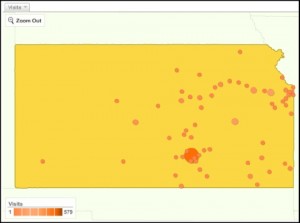Archive for January, 2010
Web Site Babylon …
Posted by baughdesign in Layout Design, Opinion, Web on January 28, 2010
 The title of this web site is, “Form Follows Function” … but what does that really mean? Simply, that the site’s mission or purpose is clearly established first (function) … and that the author or designer designs the site architecture or graphical schematic (form) in such a way so as to always “stay on point”.
The title of this web site is, “Form Follows Function” … but what does that really mean? Simply, that the site’s mission or purpose is clearly established first (function) … and that the author or designer designs the site architecture or graphical schematic (form) in such a way so as to always “stay on point”.
It is interesting to visit sites that are filled with distractions. Scores of links beckon the visitor to click … but to direct them where? In many instances, the visitor has arrived at a particular site to in order to learn more, but then is distracted away from the primary message, and towards secondary or unrelated focal points. The result is a total dilution of the main message.
For the designer, the addition of links to a particular page should always be weighed as to the overall impact it has on the site as a whole. Does the link add value, enhanced information sharing, or provide search engine optimization? Does clicking a link open a new window, keep the visitor within your site, or replace your content with something distantly related to your visitor’s initial interest?
Keep in mind what has been already shown by the television media. Attention spans have been shortened. Your message must be short, informative, and to the point. Direct the visitor to logical choices, and keep those choices to a minimum.
KISS … it’s a proven acronym that appropriately applies to both page and site design.
Using ‘Google Analytics’ …
Posted by baughdesign in Opinion, Web on January 3, 2010
 I’ve been using the analytical tool, Google Analytics, for some time now. Prior to this point, I had used statistical programs provided by web hosting companies.
I’ve been using the analytical tool, Google Analytics, for some time now. Prior to this point, I had used statistical programs provided by web hosting companies.
The Google application goes well beyond anything I’ve used in the past. The image at left illustrates just one of scores of reports available to the site administrator. Other statistical applications may show the IPs, but Google will break the information down even further, showing demographic information right down to the city level, including time on site and frequency levels. This is just one example of scores of reports available, and all can be downloaded in distributable PDF format.
Setting up a Google Analytics system is very straightforward. The administrator needs to first set-up an account at the link provided above. Google will provide some code that needs to be added to those pages you wish to track. After that, reload the pages to the web server.
Reports are accurate to within 24 hours. I use them for advertising purposes, targeted mailing programs, and search engine optimization (SEO) fine-tuning.
